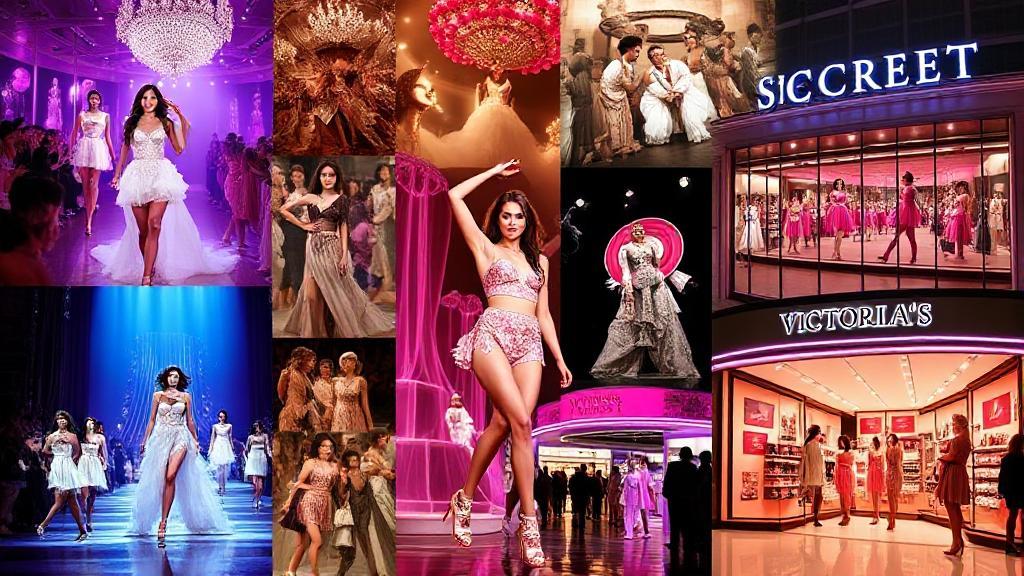The Birth of an Icon: Roy Raymond's Vision 🏪
In 1977, Roy Raymond walked into a department store to buy lingerie for his wife. Overwhelmed by the fluorescent lighting and unfriendly sales staff, he felt embarrassed and out of place. This uncomfortable experience sparked an idea that would revolutionize the intimate apparel industry.
With $80,000 in savings and bank loans, Raymond and his wife opened the first Victoria's Secret store in Stanford Shopping Center, California. The store was designed to resemble a Victorian boudoir, complete with wood-paneled walls and silk drapery, creating an elegant atmosphere where both men and women could feel at ease purchasing lingerie.
The Name's Origin 👑
The "Victoria" in Victoria's Secret was inspired by Queen Victoria, whose reign was marked by strict moral standards and proper social conduct. The "Secret" referred to what was hidden beneath the conservative Victorian exterior – suggesting both mystery and sensuality.
The Turning Point: Les Wexner's Acquisition 💼
Despite initial success, by 1982, Victoria's Secret was nearing bankruptcy. Enter Leslie Wexner, founder of The Limited. Recognizing the brand's potential, Wexner purchased Victoria's Secret for $1 million and transformed the company with a new vision:
- Shifted focus from male shoppers to female customers
- Introduced affordable luxury products
- Expanded product lines beyond lingerie
- Created a powerful brand identity through marketing
Expansion and Growth 📈
Under Wexner's leadership, Victoria's Secret underwent rapid expansion. By the early 1990s, it had become the largest American lingerie retailer, with hundreds of stores across the United States. The brand's success was fueled by its iconic catalog, which reached millions of households.
The Rise of the Angels and Fashion Shows 👼
In 1995, Victoria's Secret launched what would become its most iconic marketing strategy – the Victoria's Secret Fashion Show. The annual event featured supermodels known as "Angels," including:
- Tyra Banks
- Heidi Klum
- Adriana Lima
- Alessandra Ambrosio
- Cindy Crawford
- Naomi Campbell
- Gisele Bündchen
The shows became cultural phenomena, featuring elaborate costumes and performances by world-renowned musicians, drawing millions of viewers and launching countless modeling careers.
Financial Impact and Growth 📊
The company's evolution can be seen in its financial performance:
| Year | Revenue (Billions) | Market Position |
|---|---|---|
| 1982 | $0.007 | Struggling |
| 1995 | $1.9 | Growing |
| 2015 | $7.7 | Peak |
| 2020 | $5.4 | Transforming |
Modern Challenges and Transformation 🔄
By the late 2010s, Victoria's Secret faced mounting criticism:
"The brand's narrow definition of beauty and sexuality felt increasingly out of touch with modern consumers' values and preferences."
In response to changing consumer preferences and social movements, Victoria's Secret has undergone significant changes:
- Discontinued the Angels program
- Introduced more diverse models and sizes
- Launched the VS Collective featuring activists and athletes
- Expanded inclusive sizing options
- Refreshed marketing to emphasize empowerment over fantasy
The Future of Victoria's Secret 🔮
As Victoria's Secret continues to evolve, it faces the challenge of staying relevant in a rapidly changing retail landscape. The brand is working to redefine its image and connect with a new generation of consumers who value authenticity, inclusivity, and sustainability. For more insights into the brand's history and its impact on fashion, you can explore Victoria's Secret's official website.
Note: Roy Raymond's story took a tragic turn when he died by suicide in 1993, years after selling the company and following other unsuccessful business ventures.
